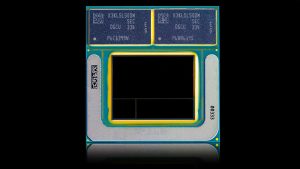Intel has introduced new technology aimed at reclaiming market share from its chip-making rivals. At Computex in Taiwan, Intel unveiled a new generation of processors for data centers. AI accelerator kits, and the architecture for an AI PC chip. This comprehensive range of products highlights Intel’s commitment to innovation and its strategic focus on artificial intelligence (AI) and performance efficiency.
The new Xeon 6 processors promise better performance and power efficiency for high-density, scale-out workloads in data centers. Intel boasted that these processors deliver significant improvements over previous generations. making them an attractive option for companies looking to upgrade their infrastructure. By focusing on performance and power efficiency, Intel aims to regain its position in the data center market. where it has faced increasing competition from rivals like AMD and Nvidia.
Intel’s Gaudi 2 and Gaudi 3 AI accelerator kits are designed to offer high performance at a third of the cost of competing platforms. At the Computex event, Intel emphasized that these kits are crucial for making AI faster, cheaper, and more accessible. The combination of Xeon processors and Gaudi AI accelerators in a system provides a powerful solution for AI workloads. making it a compelling choice for businesses looking to enhance their AI capabilities without incurring prohibitive costs.
On the PC front, Intel unveiled Lunar Lake, the architecture underlying its next generation of mobile processors. These processors are designed for AI PCs, promising no-compromise application compatibility and significant power savings — up to 40% lower than previous chip generations. Lunar Lake represents Intel’s effort to lead the AI PC market by offering advanced AI integration at the hardware level, optimized for AI workloads, and superior performance per watt. This focus on energy efficiency is critical as consumers demand thin and light machines with long battery life.

INTEL AI NEW STRATEGIES
Rob Enderle, president and principal analyst with the Enderle Group, noted that Intel has made impressive progress in reversing past mistakes. However, he also emphasized that the competition remains fierce, and the race for dominance in the chip market is far from over. Intel’s success will depend on its ability to maintain its strategic focus and continue executing its plans effectively.
Intel CEO Pat Gelsinger highlighted the company’s comprehensive strategy, which spans the full spectrum of the AI market — from semiconductor manufacturing to PC, network, edge, and data center systems. This approach aims to deliver flexible, secure, sustainable, and cost-effective solutions to maximize the opportunities in AI. By innovating across this broad spectrum, Intel aims to realize its vision of “AI everywhere.”
Forrester Senior Analyst Alvin Nguyen explained that Intel’s strategy is a smart bet on various sizes of generative AI becoming the norm, contrasting it with Nvidia’s focus on ultimate performance for increasingly larger models and data. This broad reach is also appealing to AI software makers because it offers a singular architecture that can run applications from the PC to the data center seamlessly. This reduces the complexity and effort required to move applications across different architectures, making Intel’s approach particularly advantageous.
INTEL GENERATION’S
With the sixth-generation Xeon chip, Intel seeks to regain some of its lost market share in the data center market. Over the past year, Intel’s share of the x86 chip market has declined by 5.6 percentage points to 76.4%, while AMD now holds 23.6%. Data center computing is Intel’s most important market, and continued advances in performance and power efficiency are critical to maintaining its leadership position. However, the general-purpose processor design of the Xeon chip is becoming increasingly commoditized, and competitors like AMD are also making significant advancements with their own data center processors.
The new Xeon chips come in two flavors, the 6700 and 6900 series, each offering different combinations of performance and power consumption. This product segmentation allows Intel to cater to a diverse range of end-user workloads, balancing the need for performance with power efficiency. Intel is also positioning its server microprocessors to handle more AI-based workloads independently, reducing the need for separate server GPUs to accelerate those tasks.
Intel has high hopes for Lunar Lake, which integrates advanced AI capabilities at the hardware level and is optimized for AI workloads. This architecture promises superior performance per watt and focuses on energy efficiency, potentially outperforming AMD’s Ryzen and Nvidia’s Grace CPUs in sustained workloads. Supported by a comprehensive software ecosystem for AI development, Lunar Lake competes directly with Nvidia’s CUDA and AMD’s ROCm platforms.
Mark N. Vena, president and principal analyst at SmartTech Research, noted that Intel believes Lunar Lake might catapult them back into a leadership position against Qualcomm and AMD. Unlike Nvidia, which primarily targets data center applications, Lunar Lake chips are designed for consumer PCs, making AI-powered applications more accessible to everyday users. This move could pressure AMD and Nvidia to enhance AI integration in their consumer products, driving competition and innovation in the AI PC market.
Summary:
Power consumption is a looming issue in AI’s future, and Intel’s focus on energy-efficient designs is crucial. As AI applications become more widespread, the demand for energy-efficient solutions will grow. Deborah Perry Piscione, co-founder and CEO of the Work3 Institute, emphasized the need for significant investments in energy infrastructure to support AI development and avoid future shortages similar to the semiconductor shortages experienced during the COVID-19 pandemic.
In summary, Intel’s latest innovations in AI and data center technology reflect its efforts to reclaim market share and drive competition in the AI market. By focusing on performance, power efficiency, and a broad strategic approach, Intel aims to lead the next generation of AI advancements and make AI more accessible and cost-effective for a wide range of applications.
also read : https://rezabashiri.com/chat-gpt-llvm-ai-everything-about-it/